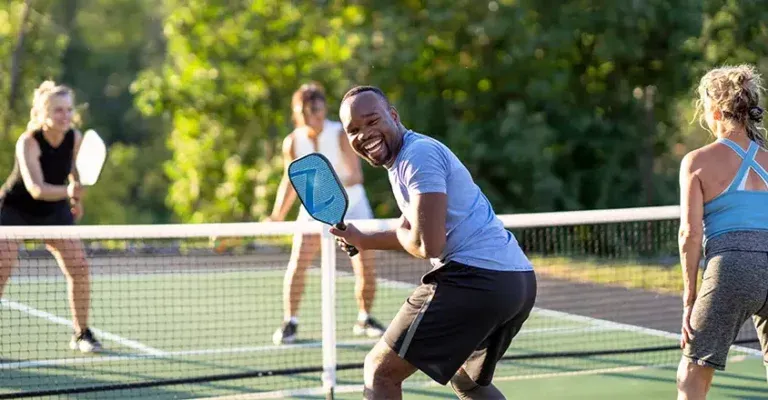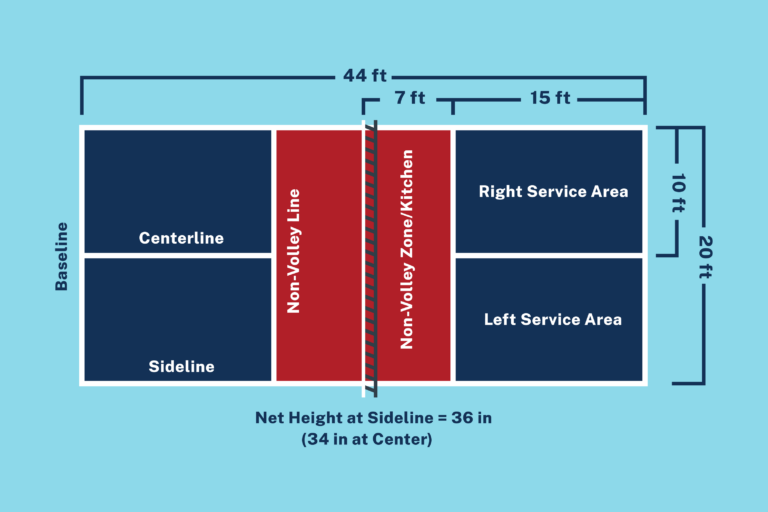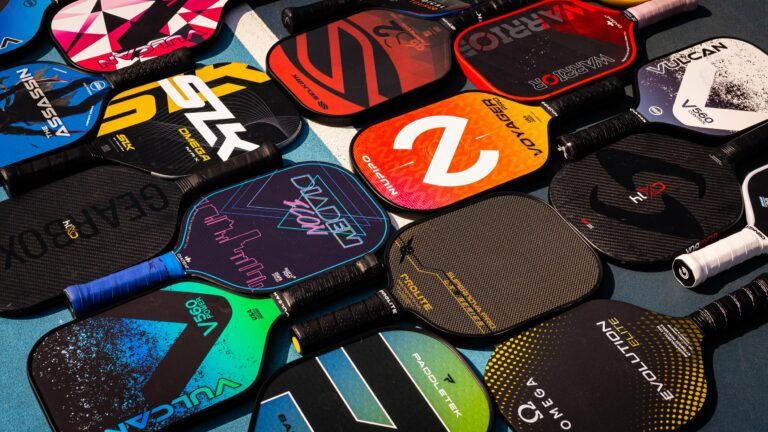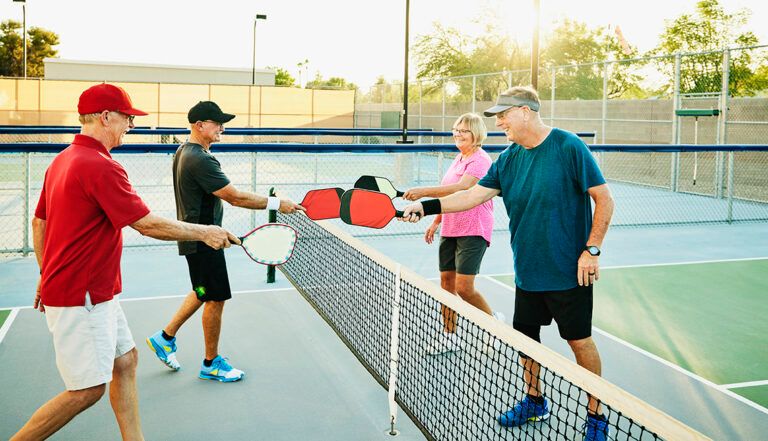Why pickleball might appeal to you
In an age where community connections are more important than ever, pickleball emerges as a sport that champions inclusivity and social engagement. The welcoming atmosphere of pickleball resonates with the same spirit found in paddle tennis, making it an appealing choice for players looking to expand their recreational horizons. You'll discover that as you step onto a pickleball court, you’ll be greeted by friendly faces eager to share tips and hone skills together, creating a sense of camaraderie that transcends generations.

In paddle tennis, players often emphasize raw power coupled with technical expertise, while pickleball favors strategic shot placement and finesse. This shift from strength to strategy can be refreshing and invigorating. Skills such as paddle control, court awareness, and strategic shot selection developed through paddle tennis can seamlessly translate to success on the pickleball court. Imagine harnessing the mastery of your paddle in a game where finesse and clever placement often lead to victory!
Moreover, with the increasing popularity of pickleball, exploring this sport opens new avenues to meet like-minded individuals, participate in diverse tournaments, and feel part of a larger community. Joining pickleball enthusiasts will not only enrich your playing experience but also deepen your social ties, making each game a joyful celebration.
Key differences between paddle tennis vs pickleball
While both racket sports can be enjoyed and appreciated, understanding their differences lays the foundation for adapting one’s skills accordingly. The distinctions primarily revolve around court dimensions, equipment, and gameplay strategies, which can significantly influence how players approach each sport. Let’s dive deeper into these differences and explore how they shape each game’s essence.
Court dimensions and layout
One of the most evident disparities between the two sports lies in their court dimensions. A pickleball court measures 20 feet wide by 44 feet long, closely resembling the dimensions of a doubles badminton court. This smaller setting requires players to think on their feet, engage in rapid exchanges, and embrace a faster pace. Additionally, the inclusion of a seven-foot non-volley zone, known as “the kitchen,” creates a unique dynamic, disallowing players from volleying while fully inside this area and consequently promoting more intricate rallies and net play.

On the flip side, a paddle tennis court, generally 50 feet long by 20 feet wide, offers a broader arena for intense exchanges, allowing players to cover more ground and engage in aggressive volleys throughout the court. Without a designated non-volley zone, the gameplay tends to favor rapid exchanges filled with powerful interactions, requiring not only agility but also robust endurance.
The contrasting layouts lead to differing styles of play, where pickleball emphasizes placement and finesse, while paddle tennis thrives on power and aggression. These variances shape the experience and strategy of each sport, providing players with distinct flavors of competition.
Equipment nuances
The equipment in both sports contribute significantly to their unique gameplay experiences. When examining the two, it becomes evident that pickleball paddles and paddle tennis paddles serve different purposes. Pickleball paddles generally max out at 17 inches in length and are crafted from various composite materials, providing a solid surface for engaging in strategic shots. Comparatively, paddle tennis paddles can reach lengths of up to 18.5 inches, often incorporating design elements like perforations to optimize play.

Furthermore, the balls differ markedly between the two sports. In pickleball, players use a lightweight plastic ball with holes reminiscent of a wiffle ball, while paddle tennis employs a rubber ball designed with lower air pressure than traditional tennis balls. This not only influences the ball’s trajectory but also affects the speed of play, as the responsive nature of the pickleball can facilitate both soft and hard shots depending on the player’s choice.
Understanding these equipment distinctions helps players adapt their techniques, as the unique feelings associated with paddle control and ball response directly impact how they approach each sport's gameplay.
Rules and gameplay
The rules and gameplay mechanics of paddle tennis and pickleball showcase further differences that define how each sport operates. In pickleball, each game plays to 11 points with a "win by 2" rule, and only the serving team can score points, requiring players to be strategic about both serves and returns. The underhand serve must clear the non-volley zone, focusing attention on precise serves that push the opponent to the back of the court.

In contrast, paddle tennis utilizes a scoring system reminiscent of traditional tennis, where games are played to four points and sets typically to six games. Players maintain the option to serve either underhand or overhand, creating more opportunities for point scoring configurations. This structure can allow for relentless back-and-forth exchanges fueled by players’ strengths and strategies.
With its unique mechanics, pickleball encourages softer shots like dinking, emphasizing precision, while paddle tennis embraces aggressive volleys in a high-speed environment. These gameplay distinctions ask players to reassess their strategies when navigating their transitions from one sport to the other.
Adapting your paddle tennis game to pickleball
Transitioning from paddle tennis to pickleball can be both exciting and challenging. This adaptation calls for a reassessment of one’s shot selection, footwork, and overall strategic approach to the game. By understanding the nuances of pickleball, players can bring their paddle tennis skills into a new arena and enhance their overall play.
Shot selection: Dinking and volleying
Dinking emerges as a quintessential aspect of pickleball, demanding a shift in approach from paddle tennis dynamics. In pickleball, this soft shot can strategically manipulate the opponent’s movements, drawing them into the non-volley zone and opening opportunities for subsequent volleys. As a paddle tennis player, the transition means integrating dinking into your shot selection while focusing on shot placement and court awareness.
To master dinking, players should practice soft shots that land just over the net, compelling opponents to respond with precise techniques. For example, using a quick backhand dink toward the opponent's kitchen can set them up for a challenging return. Adapting to these softer shots allows paddle tennis players to leverage their existing skills while enhancing their adaptability on the court.
Footwork and positioning
With its quicker rallies and smaller court dimensions, pickleball demands impeccable footwork and court positioning. Paddle tennis players may find themselves needing to refine these aspects to remain competitive. Quick reflexes and agile movements become essential elements of success.
In transitioning, players should practice shuffling steps and staying light on their feet. Anticipating the ball's trajectory requires a keen awareness of court positioning to maintain optimal coverage. Footwork drills, focusing on lateral movements, can help improve players’ agility, enabling them to navigate the court with confidence and finesse.
Strategic and cognitive differences
Adapting to pickleball also involves reshaping your mental approach to gameplay. As paddle tennis emphasizes court coverage and placement, players should stay attuned to the tactical elements introduced by pickleball. The smaller court and non-volley zone necessitate quicker decision-making, requiring players to analyze their opponents' movements and respond in real time.
As paddle tennis players step into the sphere of pickleball, the incorporation of softer shots alongside strategic placement becomes vital. Developing a tailored mental game that combines quick thinking under pressure with sharp awareness can make for a seamless and successful transition.
Transitioning from paddle tennis to pickleball
For paddle tennis players ready to venture into pickleball, a few practical tips will ease the transition. The key to success lies in acknowledging the differences while leveraging existing strengths.
Begin by practicing essential skills such as dinking, volleying, and developing quick reflexes through targeted drills. Simulate game scenarios where you can focus on precision and strategic shot selection to familiarize yourself with the gameplay dynamics. Consider reaching out to seasoned pickleball players or attending beginner clinics that provide expert insights and tailored guidance.
Above all, patience and practice are essential. Recognizing that it will take time to hone new skills within the context of pickleball is crucial. Embrace the challenge, revel in the learning experience, and enjoy the journey towards becoming a proficient pickleball player.
Finding your pickleball community
As the popularity of pickleball continues to soar, finding a community can enhance your experience of this vibrant sport. Numerous resources exist for locating pickleball courts and clubs in your local area. Many cities have embraced the sport, often dedicating spaces within parks and recreation centers specifically for pickleball.
Participating in social events, leagues, or local tournaments can further enrich your connection to the sport. These gatherings not only allow you to engage in friendly competition but also foster an environment where players can celebrate milestones together. Engaging with others opens the door to shared insights, tips, and friendships that enhance your pickleball journey.
Exploring online communities and forums dedicated to pickleball can offer additional support and resources. Here, you may find local meetups, tournaments, and expert advice shared among those passionate about the game. Cultivating connections enhances the essence of pickleball community, fun, and spirited play.
Essential pickleball gear
As you embark on your pickleball journey, investing in the right gear becomes crucial. Selecting the best pickleball paddles is integral to ensuring you enjoy your new sport to the fullest. When transitioning from paddle tennis, consider paddles that promote control and skill development, focusing on those that balance power and finesse.
Shoes specifically designed for court play can provide necessary support and comfort, while appropriate athletic apparel allows for a full range of motion. Investing in the right gear enhances your performance and gives you the confidence needed to thrive on the court.
Pickleball etiquette and terminology
As with any sport, pickleball etiquette and sportsmanship play a pivotal role in fostering a respectful and enjoyable gaming environment. Understanding the basic rules of conduct, such as promoting fair play, communicating effectively with opponents, and respecting court boundaries, goes a long way toward ensuring a positive experience for all players involved.
Additionally, familiarizing yourself with common pickleball terminology can enhance your understanding of the game. Whether learning terms such as "dink," "volley," or "third shot drop," this language connects you with fellow players and enriches the overall engagement in the sport.
In summary, paddle tennis and pickleball may share a common lineage, yet their unique qualities present players with varying experiences on the court. Understanding the key differences in courts, equipment, and gameplay enhances one’s ability to navigate the transition from paddle tennis to pickleball. Embracing the challenges of this transition opens the door to enjoyment, fitness, and a sense of community that can enrich your life. As you take the plunge into the world of pickleball, remember to savor the excitement of new challenges, celebrate your progress, and enjoy the rewarding connections formed along the way.










